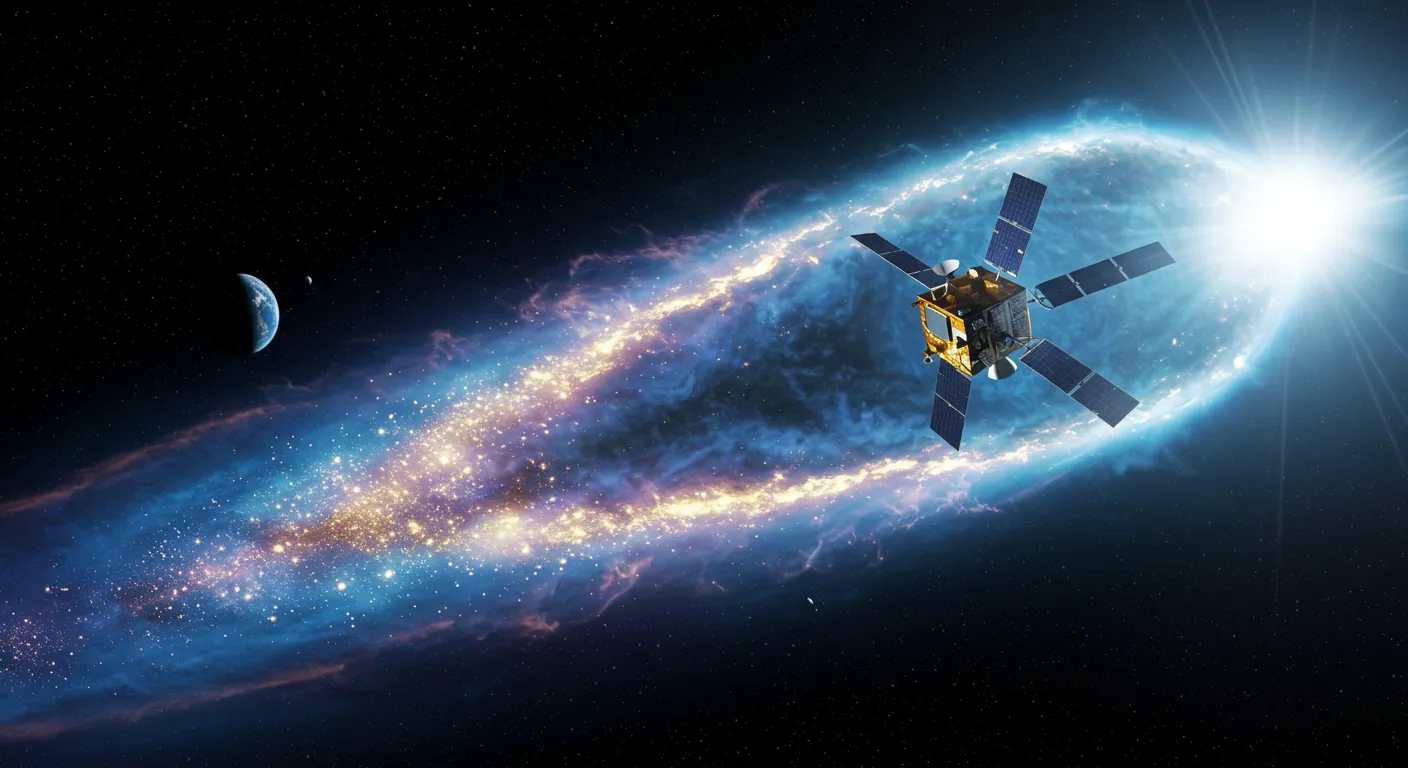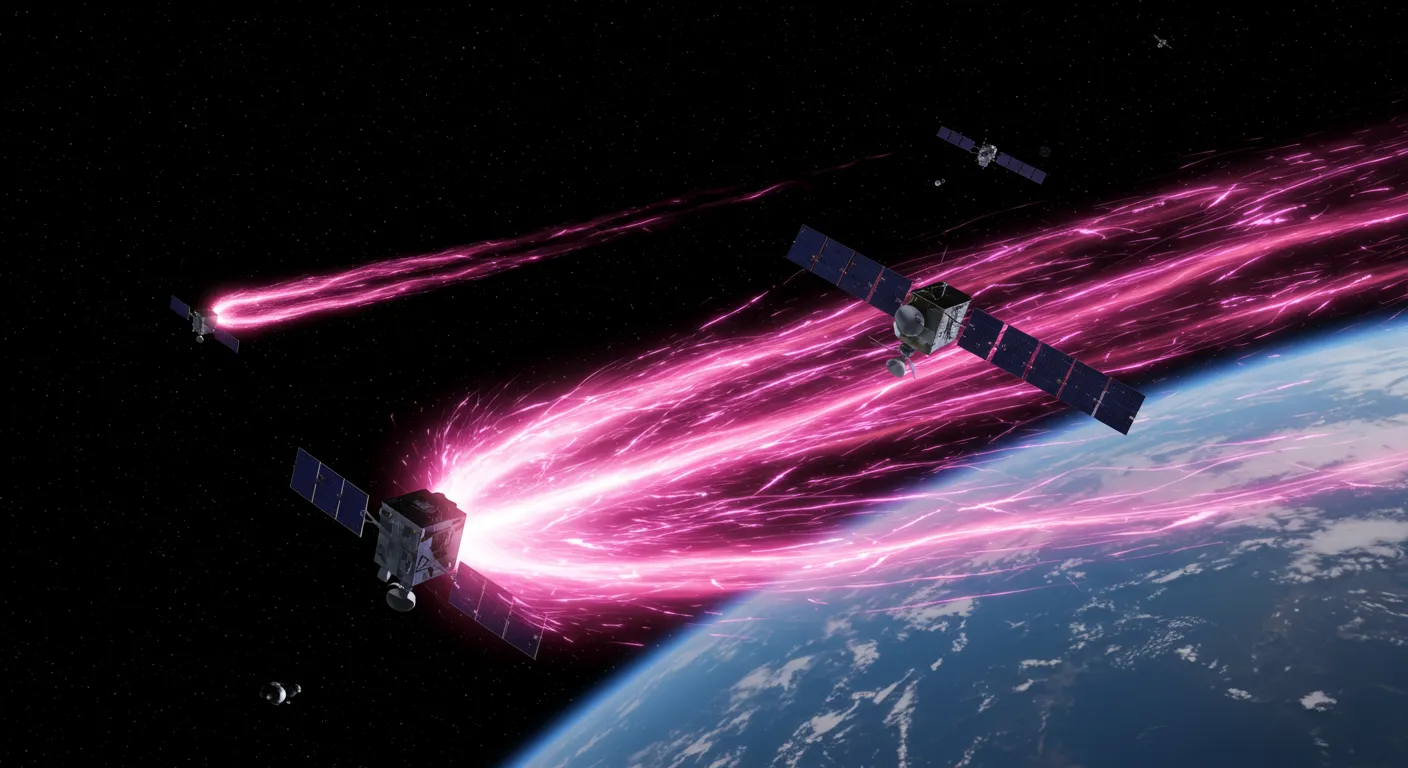Effects of Solar Winds on Satellites: From Radiation to Electromagnetic Interference

The effects of solar winds on satellites are a growing concern for scientists, engineers, and space agencies worldwide.
Anúncios
As our reliance on satellite technology increases, so does our vulnerability to the Sun’s unpredictable behavior.
Solar winds, composed of charged particles ejected from the Sun’s corona, can disrupt satellite operations in multiple ways, from radiation damage to electromagnetic interference.
Understanding these impacts is crucial for safeguarding our communication, navigation, and weather forecasting systems.
The increasing frequency of solar storms necessitates robust research and innovative solutions to mitigate potential disruptions.
Moreover, as space exploration expands, the number of satellites in orbit continues to grow, compounding the risks associated with solar activity.
The Science Behind Solar Winds
Solar winds are streams of charged particles—primarily electrons and protons—that flow outward from the Sun at speeds ranging from 250 to 800 kilometers per second.
These particles carry with them the Sun’s magnetic field, creating a dynamic and often turbulent space environment.
When solar winds interact with Earth’s magnetosphere, they can trigger geomagnetic storms, which have cascading effects of solar winds on satellites.
Such storms can lead to fluctuations in satellite orbits and even cause physical damage to satellite structures.
Understanding the underlying physics of solar winds is essential for predicting their behavior and potential impacts on satellite systems.
The interaction between solar winds and Earth’s magnetic field can also lead to beautiful auroras, but it poses significant risks for satellites.
According to NASA’s Solar Dynamics Observatory, the Sun’s activity follows an 11-year cycle, with periods of heightened solar wind intensity known as solar maximums.
During these phases, the frequency and strength of solar winds increase, posing greater risks to satellite infrastructure.
This cyclical nature of solar activity allows researchers to anticipate potential threats and develop strategies to mitigate them.
+ Solar Cycle 25: What to Expect from Sunspots in the Coming Years?
Radiation: The Silent Threat to Satellite Longevity
One of the most significant effects of solar winds on satellites is the increased exposure to radiation.
High-energy particles from solar winds can penetrate satellite shielding, damaging sensitive electronic components.
Over time, this radiation can degrade solar panels, reduce battery efficiency, and even cause total system failures.
As satellites age, their vulnerability to radiation increases, necessitating ongoing assessments and upgrades to their protective measures.
For example, in 2003, a powerful solar storm caused the loss of the $640 million ADEOS-2 satellite, highlighting the destructive potential of these events.
Radiation-induced anomalies are particularly concerning for satellites in geostationary orbit, where they are more exposed to the full force of solar winds.
This increased exposure can lead to costly repairs and replacements, impacting satellite operators’ bottom lines.
Additionally, the cumulative effects of radiation exposure can lead to long-term degradation of satellite systems, making regular monitoring essential.

Table 1: Common Satellite Components Vulnerable to Radiation
| Component | Potential Damage | Impact on Operations |
|---|---|---|
| Solar Panels | Reduced efficiency, physical degradation | Decreased power generation |
| Microchips | Data corruption, circuit damage | System malfunctions |
| Batteries | Accelerated aging | Shorter operational lifespan |
Electromagnetic Interference: Disrupting Communication and Navigation
Beyond radiation, the effects of solar winds on satellites extend to electromagnetic interference (EMI).
Charged particles from solar winds can induce electric currents in satellite circuits, leading to signal noise, data loss, and even temporary blackouts.
This interference is especially problematic for communication satellites, which rely on precise signal transmission to function effectively.
The resulting disruptions can affect a wide range of services, from television broadcasts to internet connectivity.
During geomagnetic storms, the ionosphere becomes highly ionized, further exacerbating EMI.
This can disrupt GPS signals, affecting everything from aviation to smartphone navigation.
A 2015 study by the National Oceanic and Atmospheric Administration (NOAA) found that severe solar storms could degrade GPS accuracy by up to 50 meters, posing significant risks for precision-dependent industries.
As industries increasingly rely on satellite navigation, the economic implications of such disruptions can be substantial.
Moreover, the potential for EMI to interfere with scientific data collection from satellites can hinder research efforts across various fields, including climate science and astronomy.
++ What If We Put Alpha Centauri in Place of the Sun?
Mitigating the Risks: Innovations in Satellite Design
To combat the effects of solar winds on satellites, engineers are developing advanced shielding materials and radiation-hardened electronics.
For instance, satellites like the James Webb Space Telescope incorporate multi-layered insulation and redundant systems to withstand harsh space conditions.
These innovations not only enhance satellite resilience but also extend their operational lifespans.
Additionally, AI-driven predictive models are being used to anticipate solar wind activity, allowing operators to temporarily shut down vulnerable systems during peak periods.
This proactive approach can minimize the impact of solar storms on critical satellite operations.

Table 2: Strategies to Mitigate Solar Wind Effects
| Strategy | Description | Effectiveness |
|---|---|---|
| Radiation-hardened components | Use of materials resistant to radiation damage | High |
| Predictive AI models | Forecasting solar wind activity | Moderate to high |
| Redundant systems | Backup systems for critical operations | High |
Furthermore, ongoing research into new materials and technologies is essential for keeping pace with evolving solar threats.
Collaborative efforts among international space agencies can lead to more standardized approaches to satellite design and operation.
For more information on the impacts of solar activity, visit NASA’s Solar Dynamics Observatory.
The Economic and Societal Impact
The effects of solar winds on satellites are not just technical challenges—they have real-world consequences.
Disruptions to satellite operations can cost billions of dollars in lost revenue and repair costs.
For example, the 1989 Quebec blackout, caused by a geomagnetic storm, resulted in a $2 billion economic loss and left millions without power for hours.
This event underscores the interconnectedness of satellite technology and critical infrastructure.
Moreover, satellites play a vital role in disaster management, climate monitoring, and global communication.
Any prolonged disruption could hinder emergency response efforts and exacerbate the impacts of natural disasters.
The economic implications extend to various sectors, including agriculture, transportation, and finance, making resilience against solar wind effects a priority.
Additionally, the potential for increased insurance costs for satellite operators due to heightened risks may further strain financial resources in the industry.
The Future of Satellite Resilience
As we venture further into the space age, the effects of solar winds on satellites will remain a critical area of research.
Collaborative efforts between space agencies, private companies, and academic institutions are essential for developing innovative solutions.
Projects like the European Space Agency’s Lagrange mission aim to monitor solar activity in real-time, providing early warnings for potential disruptions.
This initiative highlights the importance of international cooperation in addressing shared challenges in space.
In conclusion, while solar winds pose significant challenges to satellite operations, advancements in technology and international cooperation offer hope for a more resilient future.
By understanding and addressing these effects, we can ensure the continued reliability of the satellites that underpin modern life.
Moreover, ongoing education and awareness about the impacts of solar winds can foster a culture of preparedness within the satellite industry.
